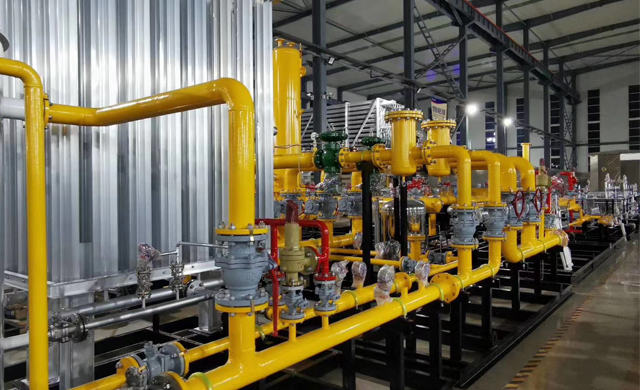
Oct . 12, 2024 06:36
Back to list
Understanding the Function and Benefits of Pneumatic Valves in Industrial Applications
Understanding Pneumatic Valves A Critical Component in Automation
Pneumatic valves play a vital role in various industrial applications, especially in automated systems that utilize compressed air. These valves are essential in controlling the flow, pressure, and direction of air to ensure optimal operation of machinery and processes. This article delves into the functionality, types, applications, and advantages of pneumatic valves in modern automation.
What are Pneumatic Valves?
Pneumatic valves are devices that regulate the flow of compressed air within pneumatic systems. They can turn the air supply on or off, control the speed of actuators, and manage the direction of airflow to perform specific tasks. These valves are typically made from materials such as aluminum, brass, or plastic, and are designed to withstand the pressures associated with compressed air.
Types of Pneumatic Valves
There are several types of pneumatic valves, each serving unique functions
1. Directional Control Valves These valves control the direction of airflow in a pneumatic system. They can be manually operated, mechanically actuated, or electrically controlled. A common type is the 3/2 valve, which has three ports and two positions, allowing airflow to be directed in either of two possible routes.
2. Pressure Control Valves These valves regulate the pressure within a pneumatic system. Pressure relief valves and pressure regulators are common examples that help maintain safe operating conditions and protect equipment from overpressure.
3. Flow Control Valves Flow control valves regulate the speed of pneumatic actuators by controlling the airflow rate. This allows for precise control over the speed and operation of machinery, which is critical in applications such as assembly lines.
pneumatic valve

4. Shut-off Valves As the name suggests, these valves allow for the complete stop of airflow in a section of the system. They are crucial for maintenance and safety, as they allow operators to isolate parts of the system when necessary.
Applications of Pneumatic Valves
Pneumatic valves are highly versatile and are used across various industries, including
- Manufacturing In automated assembly lines, pneumatic valves regulate the operation of cylinders and actuators, leading to efficient assembly processes. - Automotive Pneumatic systems are prevalent in automotive production facilities, where valves control pneumatic tools and robots. - Food and Beverage Sterile environments are critical in food processing. Pneumatic valves are utilized for packaging, bottling, and conveyor systems to ensure minimal contamination. - Construction Pneumatic tools and equipment rely on pneumatic valves for efficient operation and control of heavy machinery.
Advantages of Pneumatic Valves
The use of pneumatic valves offers several advantages
- Speed and Efficiency Pneumatic systems can actuate quickly, enabling fast response times essential for production lines and machinery. - Simplicity and Reliability Pneumatic valves are often simpler in design compared to hydraulic or electric alternatives, resulting in fewer components that could fail. - Cost-Effectiveness Pneumatic systems are typically less expensive to design and maintain, as compressed air is often easier to source and control than hydraulic fluids or electrical systems. - Safety In hazardous environments, pneumatic systems reduce electrical risks since they operate using compressed air, which is less likely to cause sparks.
Conclusion
Pneumatic valves are indispensable components in the realm of automation. Their ability to control the flow and direction of compressed air allows industries to maintain efficiency, safety, and productivity. As technology continues to advance, the integration of pneumatic systems with digital controls and sensors will undoubtedly increase, further enhancing the capabilities and applications of pneumatic valves. Understanding their function and significance is essential for anyone involved in the design, operation, or maintenance of automated processes. Thus, as industries evolve, pneumatic valves will continue to be a cornerstone of automation and efficiency.
Next:
Latest news
-
Safety Valve Spring-Loaded Design Overpressure ProtectionNewsJul.25,2025
-
Precision Voltage Regulator AC5 Accuracy Grade PerformanceNewsJul.25,2025
-
Natural Gas Pressure Regulating Skid Industrial Pipeline ApplicationsNewsJul.25,2025
-
Natural Gas Filter Stainless Steel Mesh Element DesignNewsJul.25,2025
-
Gas Pressure Regulator Valve Direct-Acting Spring-Loaded DesignNewsJul.25,2025
-
Decompression Equipment Multi-Stage Heat Exchange System DesignNewsJul.25,2025

